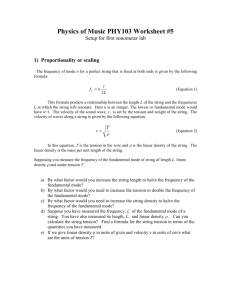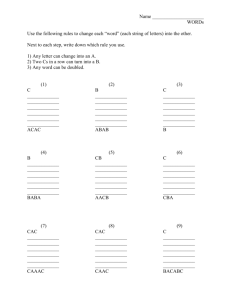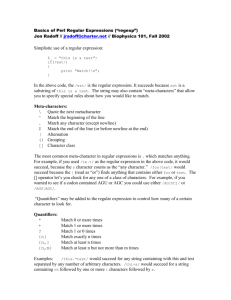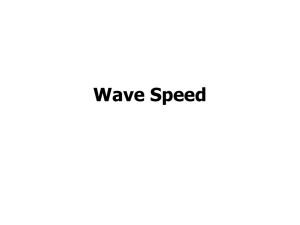Static Equilibrium
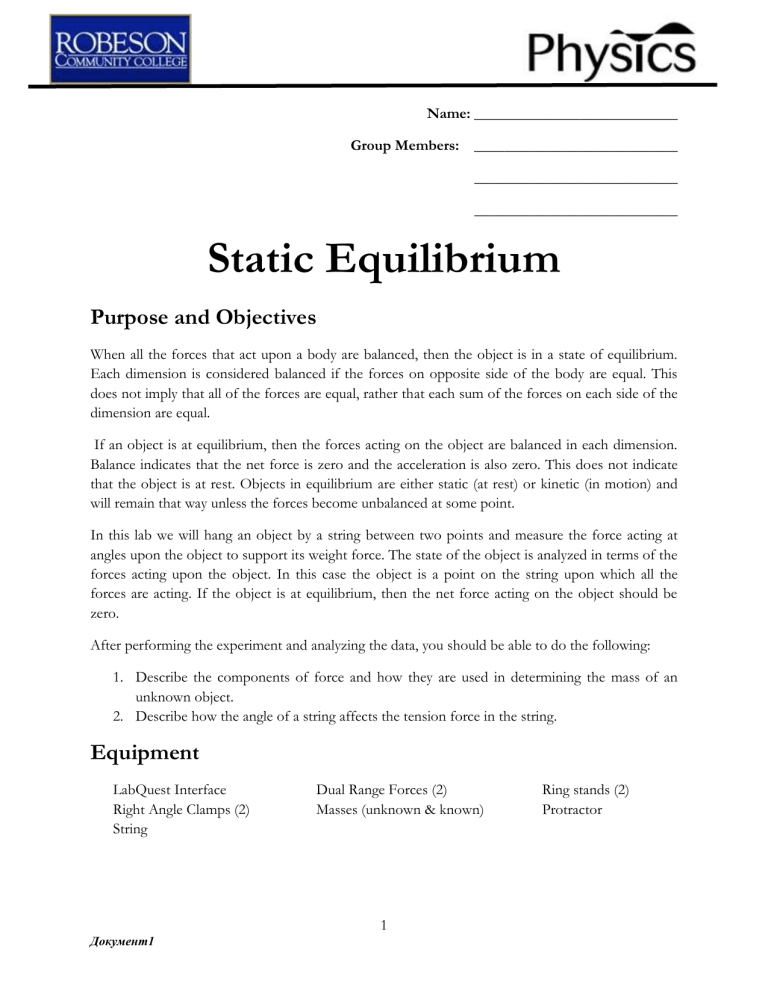
Name: ___________________________
Group Members: ___________________________
___________________________
___________________________
Static Equilibrium
Purpose and Objectives
When all the forces that act upon a body are balanced, then the object is in a state of equilibrium.
Each dimension is considered balanced if the forces on opposite side of the body are equal. This does not imply that all of the forces are equal, rather that each sum of the forces on each side of the dimension are equal.
If an object is at equilibrium, then the forces acting on the object are balanced in each dimension.
Balance indicates that the net force is zero and the acceleration is also zero. This does not indicate that the object is at rest. Objects in equilibrium are either static (at rest) or kinetic (in motion) and will remain that way unless the forces become unbalanced at some point.
In this lab we will hang an object by a string between two points and measure the force acting at angles upon the object to support its weight force. The state of the object is analyzed in terms of the forces acting upon the object. In this case the object is a point on the string upon which all the forces are acting. If the object is at equilibrium, then the net force acting on the object should be zero.
After performing the experiment and analyzing the data, you should be able to do the following:
1.
Describe the components of force and how they are used in determining the mass of an unknown object.
2.
Describe how the angle of a string affects the tension force in the string.
Equipment
LabQuest Interface
Right Angle Clamps (2)
String
Dual Range Forces (2)
Masses (unknown & known)
Ring stands (2)
Protractor
1
Документ1
Procedure
Part A.
1.
Attach the Dual Range Sensors to the cross bar separated by 30 cm. Attach the cross bar to the ring stands using the right angle clamps as in Figure 1.
2.
Place a string between the hooks of the Dual Range sensors and attach it securely to each hook.
3.
Open Logger Pro and zero out each sensor.
4.
Hang the unknown mass on the string so that the string makes the same angle with respect to the horizontal on each side of the mass. Measure this angle and the tension forces on each end of the string, and record in the data table.
5.
Compute the magnitude of the mass.
6.
Repeat steps 1-4 two more times to get an average mass.
7.
Using a balance, mass the unknown object and record in the data table.
Figure 1
Part B.
1.
Repeat the procedure in part A using a known mass and keeping the angle the same.
Record the starting angle.
2.
Starting with the smallest mass, record the tensions in the data table.
3.
Repeat steps 1 and 2 increasing the mass for two additional times.
4.
Plot the total tension force in the y dimension versus the mass suspended, and draw a smooth curve that fits the data best.
2
Документ1
Data
Part A
Data Table 1
Construct a data table for the values obtained in Part A
Measured value of Unknown mass, m : __________________________
Calculations (show work)
Part B
Data Table 2
Construct a data table for the values obtained in Part B
Questions
1.
How close was your calculated mass to the actual mass?
2.
What factors might contribute to the difference between your calculated value and the actual mass of the cart?
3
Документ1
3.
A small bird of mass m perches on the center of a string of negligible mass that is suspended from two ends at equal height. When this happens, the string takes on a "v" shape with the bird at the vertex. The string on either side of the bird makes a small angle θ with the horizontal.
1.
Draw a free body diagram of the bird.
2.
Derive an equation for the magnitude of the tension T in the string in terms of m, g, and θ .
3.
What is the tension in the string when …
1.
the two halves of the string are vertical ( θ = 90°)?
2.
the two halves of the string are horizontal ( θ = 0°)?
Документ1
4



